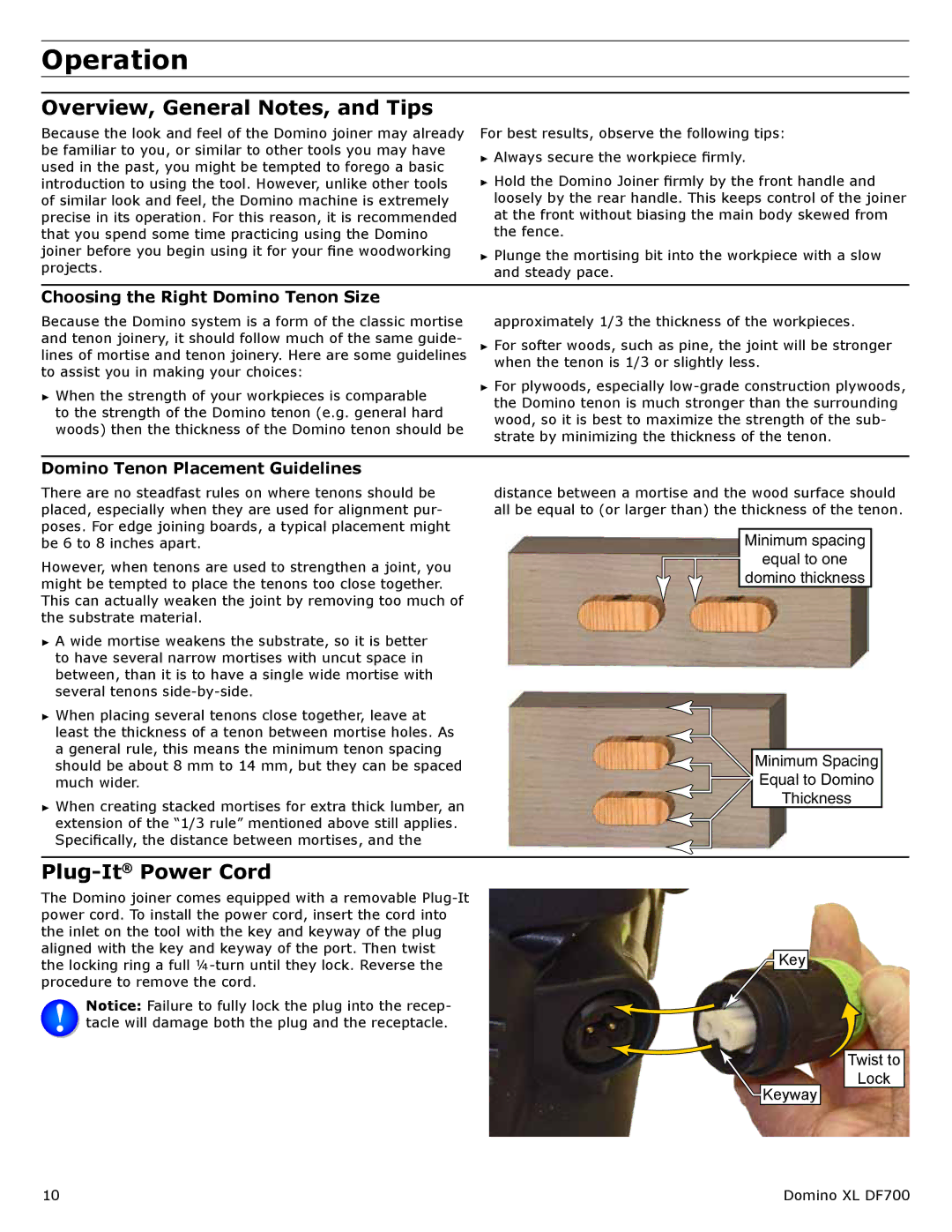
Operation
Overview, General Notes, and Tips
Because the look and feel of the Domino joiner may already be familiar to you, or similar to other tools you may have used in the past, you might be tempted to forego a basic introduction to using the tool. However, unlike other tools of similar look and feel, the Domino machine is extremely precise in its operation. For this reason, it is recommended that you spend some time practicing using the Domino joiner before you begin using it for your fine woodworking projects.
For best results, observe the following tips: ►► Always secure the workpiece firmly.
►► Hold the Domino Joiner firmly by the front handle and loosely by the rear handle. This keeps control of the joiner at the front without biasing the main body skewed from the fence.
►► Plunge the mortising bit into the workpiece with a slow and steady pace.
Choosing the Right Domino Tenon Size
Because the Domino system is a form of the classic mortise and tenon joinery, it should follow much of the same guide- lines of mortise and tenon joinery. Here are some guidelines to assist you in making your choices:
►► When the strength of your workpieces is comparable to the strength of the Domino tenon (e.g. general hard woods) then the thickness of the Domino tenon should be
approximately 1/3 the thickness of the workpieces.
►► For softer woods, such as pine, the joint will be stronger when the tenon is 1/3 or slightly less.
►► For plywoods, especially
Domino Tenon Placement Guidelines
There are no steadfast rules on where tenons should be placed, especially when they are used for alignment pur- poses. For edge joining boards, a typical placement might be 6 to 8 inches apart.
However, when tenons are used to strengthen a joint, you might be tempted to place the tenons too close together. This can actually weaken the joint by removing too much of the substrate material.
►► A wide mortise weakens the substrate, so it is better to have several narrow mortises with uncut space in between, than it is to have a single wide mortise with several tenons
►► When placing several tenons close together, leave at least the thickness of a tenon between mortise holes. As a general rule, this means the minimum tenon spacing should be about 8 mm to 14 mm, but they can be spaced much wider.
►► When creating stacked mortises for extra thick lumber, an extension of the “1/3 rule” mentioned above still applies. Specifically, the distance between mortises, and the
distance between a mortise and the wood surface should all be equal to (or larger than) the thickness of the tenon.
Minimum spacing
equal to one
domino thickness
Minimum Spacing
Equal to Domino
Thickness
Plug-It® Power Cord
The Domino joiner comes equipped with a removable
Notice: Failure to fully lock the plug into the recep- tacle will damage both the plug and the receptacle.
Key
Keyway
Twist to
Lock
10 | Domino XL DF700 |
